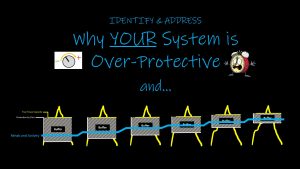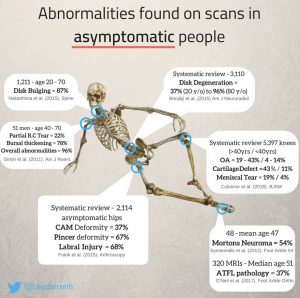Useful links relating to session TWO
Think back on each topic from today’s session. Read on to find more useful info in each area.
Topic: BIOPLASTICITY
- VIDEOS
Everyone should watch this one again. The video on Buffers from Lorimer Moseley:
https://www.youtube.com/watch?v=9PNF3YX1yCM
The brain video about Neuroplasticity:
https://www.youtube.com/watch?v=ELpfYCZa87g
Review and further info from session one. Lorimer Moseley (Pain Neuroscientist) “Why Things Hurt” TedEx talk. 1st 5mins is what we saw in session 1, another 10 mins after that with more intriguing pain stuff (not strictly bioplasicty, but the snake story is shows how the brain’s processing influences what we might feel).
https://www.youtube.com/watch?v=gwd-wLdIHjs
- WRITTEN
From PainHEALTH, based out of WA from a group of renowned experts:
http://painhealth.csse.uwa.edu.au:8080/neuroplasticity.html
- PICTURES
How we USE Bioplasticity to help get out of persistent pain. Identify the factors involved in your pain (DIMs and SIMs) then take action to ADDRESS them. Set activity and exercise levels sensibly and progress steadily to further reduce the size of your buffer.
And this little pic below shows the relationship between time and whether our pain is more likely about tissue damage or more likely due to our pain system’s many adaptations and changes (AKA Bioplasticity). Tissue is pretty good at healing and/or becoming stable, our pain system is pretty good at protecting us long term EVEN IF WE DON’T REALLY NEED PROTECTING.
Topic: DIMs & SIMs (Safety In Me & Danger In Me)
- PRODUCT
The PROTECTOMETER is available online and at our clinic ($35). Have a look through it next time you’re in. DIMs and SIMs is only one section of this great little handbook. Or for the app version (iPad only) go to Noigroup.com for the download link via iTunes. $15. (Not available for phones or android tablets):
http://www.noigroup.com/en/Product/EPHP
This book is reviewed here by a physiotherapy/medical journal and gives a good summary of what it’s about:
https://www.ncbi.nlm.nih.gov/pmc/articles/PMC5125472/
- PICTURES
Images from other people identifying their DIMs and SIMs
http://www.protectometer.com/community.html
- WRITTEN
A brief, written “Who sank the boat?” story about someone getting back pain.
http://burnsidephysiotherapy.com.au/who-sank-the-boat/
A blog by a patient with persistent pain who discusses his discovery of the DIMs and SIMs concept. Follow along as he works his way through his personal list and uses the exercise to discover that he needs to take a different sort of action to help his recovery…
http://paindrainblog.com/post/164992272176/29-dims-and-sims
Topic: Common myths that people can assume are big players in pain…
- WRITTEN
- I love the title of this article! “Bulls**t about posture causes pain & suffering” (also talks a lot about ‘core’)
http://www.pain-ed.com/blog/2018/06/18/bullshit-about-posture-causes-pain-suffering/
2. A PDF from UK based shoulder expert Jeremy Lewis that further explores the problems with pain and scans.
3. An article from an osteopath about how MRIs can be problematic for spinal pain
http://thehealthlodge.com.au/blog/why-an-mri-could-actually-make-your-back-pain-worse-1
4. “The Perfect Posture Myth”
https://bodylogicphysiotherapy.com.au/resource/perfect-posture-myth/
- VIDEOS
- There’s no such thing as perfect posture. (The main bit on ‘posture’ starts about halfway in)
https://www.youtube.com/watch?v=cnLxcEMdjVk
2. Is your XRay, CT or MRI helpful or harmful?
https://www.youtube.com/watch?time_continue=10&v=u3EK9h4JQlo
3. Short intro: CRAP said by health professionals. Skip to 2:49. https://www.youtube.com/watch?v=SPCVbOmyees
Long intro to same video: Health professionals often say things that create fear/worry/anxiety. They don’t do this deliberately. They are trying to be helpful by giving an explanation. However, many of these supposed causes of pain have no medical evidence to support them. Particularly once pain has persisted beyond 3-6 months it is highly unlikely these sorts of things are really the issue (if they ever were). This video of a Peter O’Sullivan lecture gives some good examples of these fear- inducing statements. The first half is pretty heavy on medical research jargon (it’s a talk to health professionals), but essentially discusses the fact that increased emotional distress is strongly linked to having longer term pain and disability. SKIP to 2:49 for the bit on crap said by health professionals.
4. Another very good Prof Peter O’Sullivan video. Discusses some myths in back pain with patients.
https://www.youtube.com/watch?v=dlSQLUE4brQ
5. A Chiropractor debunks common chiropractic/back pain myths (eg “your back is out”, “one leg is longer = back pain”, “your pelvis is out of alignment”, and more):
https://www.youtube.com/watch?v=PmEC1U-ZeNw
- PICTURES
How often we find “stuff” on spinal scans in PEOPLE WITHOUT ANY SPINAL PAIN…
Another image below showing stats from several studies looking at scans performed on people WITHOUT SYMPTOMS.
*Remember – the previous table and the below image DO NOT mean that scans are always useless. Its means that they CAN be useless or even harmful by triggering health care professionals to take the wrong action if your scan findings are not the real cause of your pain. It is the responsibility of your health care professional to be aware of this sort of information and be able to discuss with you whether your scan findings are important. Be aware that this information is not necessarily common knowledge in medicine yet.
JUMP TO OTHER SESSION INFO…






